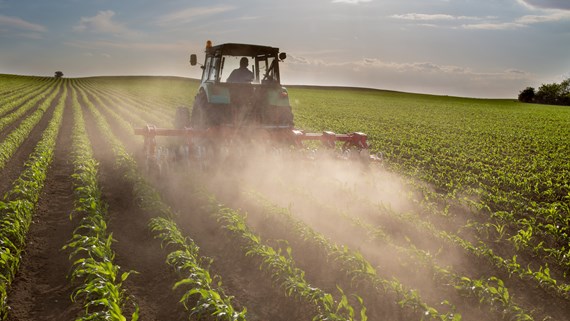Carbon capture on farms
Insight

Rural estates face a growing number of schemes in which the delivery of environmentally beneficial land management practices will be harnessed to generate carbon credits or biodiversity tokens for sale. These range from woodland creation to increase tree carbon storage, to changes in farming practices that improve carbon storage in the soil. But the way in which the interests of different stakeholders intersect in farmland means careful thought must be given to the ability to enter into such schemes and the implications of doing so.
Tenancy agreements
Tenants will often find they have to open up discussions with their landlord before entering into such schemes, as there may be a variety of provisions within their tenancies that impede them from doing so.
- Reservations: farm tenancies will commonly reserve timber to the landlord, but sometimes also the right to plant new trees. The right to install renewables apparatus may be reserved.
- Tenant’s covenants: user and alterations covenants may also be relevant, as can provisions requiring particular farming practices. Remember that many modern form tenancies include a clause requiring a landlord to consent to a tenant entering into environmental or other schemes that place limitations or positive obligations on the farming operations on a holding.
- Termination: carbon credit schemes require commitment for a defined duration, so the term of a tenancy (and a landlord’s right to break the term) will be pertinent to a tenant’s ability to commit to a scheme.
Agricultural tenancies come in many shapes and sizes and contain a tremendous variety of potentially relevant provisions. A tenant is as likely to be farming under a 60-year-old Agricultural Holdings Act tenancy as a modern farm business tenancy. Each tenancy will give rise to a different legal context for a proposed environmental scheme. Landlords and tenants therefore need to consider the terms of each tenancy agreement carefully. Through constructive dialogue landlords and tenants should be able to find ways forward that are mutually economically attractive as well environmentally beneficial.
Other stakeholders
Owner-occupiers may also need to consider the interests of other (often overlooked) parties before committing to environmental schemes.
- Other owners: if it is not just your name on the title, do you have the consent of other owners?
- Neighbouring landowners: do they have the benefit of restrictive covenants that could prevent the installation of renewables apparatus? Are there other rights (such as sporting rights) that may limit your plans?
- Mortgagees: is the bank’s consent required for a change of use or physical alterations to the land?
- Farm partnerships: do you have the agreement of your fellow farm partners to enter into a scheme?
- Contract farming agreements: are you certain that the delivery of the specific farming practices required by a scheme lie in your gift (and not the discretion of the contract farmer)?
Tenants may need to explore some of these areas too. Essentially, the question is whether it is within your exclusive control to deliver on the commitments of a scheme.
Commitments and consequences
The details of scheme commitments may vary widely, from woodland and hedgerow enhancement, to those with a focus on the soil (crop rotations, cover crops, injection drilling) or greenhouse gas reduction (fertiliser and fuel types). However, there are certain common aspects.
Duration
Schemes will have defined durations. For some this may be short, but others designed to secure long-term carbon capture may entail a commitment over decades. You may need to consider how this fits in with your future plans for retirement or the sale of the land. Giving over land with strategic potential to an environmental use now might also have consequences for the likelihood of its development in the longer term.
Additionality
Signing up to a scheme will usually involve demonstrating that you are not already under an existing legal obligation to provide the environmentally beneficial outcomes, whether that is an obligation to a landlord, a planning authority or other state body, or under another environmental scheme. As mentioned in our Woodland – conditional exemption and environmental schemes article, this means entering into one scheme may inhibit your ability to benefit from others.
Leakage
Scheme providers will want to know that the adoption of environmentally beneficial commitments at one site will not result in an intensification of land use (and thus increased greenhouse gas emissions or reduced carbon capture) on land elsewhere. You cannot just move a high input / high yield operation down the road.
There are, therefore, likely to be implications to entering into carbon credit and biodiversity schemes, which may not be limited to a change to day-to-day farming practices. The decision to join a scheme needs to fit into the wider strategy of an estate over the long term and should not be taken in hand unadvisedly or lightly.
Read the Rural Estates Newsletter Spring 2022 in full here.
If you require further information about anything covered in this briefing, please contact James Maxwell or your usual contact at the firm on +44 (0)20 3375 7000.
This publication is a general summary of the law. It should not replace legal advice tailored to your specific circumstances.
© Farrer & Co LLP, January 2022







